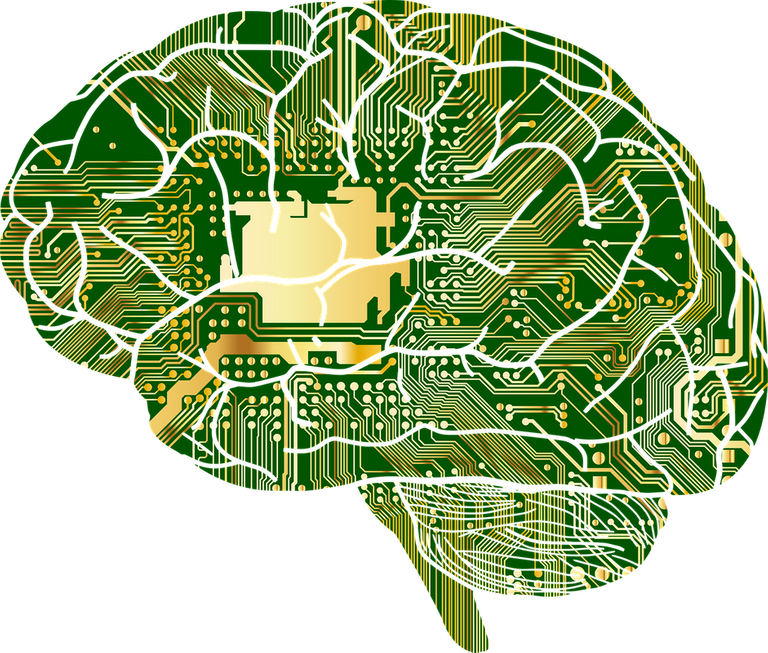
Los avances tecnológicos en el campo de salud siguen su desarrollo diario y las personas que se encuentran frente a estos proyectos no dudan en que la solución a muchas enfermedades y complicaciones médicas están por resolverse gracias a la tecnología. Tal es el caso del desarrollo de dos chips que permiten a personas con tetraplejia escribir con la mente.
Technological advances in the field of health continue their daily development and people who are in front of these projects do not doubt that the solution to many diseases and medical complications are about to be solved thanks to technology. Such is the case of the development of two chips that allow people with quadriplegia to write with their minds.
Un grupo de científicos compuesto por neurocientíficos, bioingenieros y expertos en inteligencia artificial, han desarrollado dos chips capaces de hacer que una persona con discapacidad motora pueda escribir lo que piensa, esto gracias a los grandes avances que la Inteligencia Artificial (IA) ofrece, este grupo de científicos realizo una prueba en un voluntario que presentaba tetraplejia arrojando resultados positivos, pues el voluntario podía ver escritas las palabras que pensaba.
A group of scientists composed of neuroscientists, bioengineers and experts in artificial intelligence, have developed two chips capable of making a person with motor disabilities can write what he thinks, this thanks to the great advances that Artificial Intelligence (AI) offers, this group of scientists conducted a test on a volunteer who had tetraplegia yielding positive results, as the volunteer could see written the words he thought.
El paciente que decido ser voluntario perdió su movilidad del cuello hacia abajo producto de una lesión medular el año 2007, él se prestó para que le abrieran el cráneo y le implantaran dos chips en el giro precentral. Una vez los chips fueron implantados los científicos de las universidades de Stanford, Brown y Harvard le solicitaron al paciente que pensase que estaba escribiendo para poder verificar los resultados de la implantación y la efectividad de los chips. Cuando el paciente pensó que estaba escribiendo en ese momento la Interfaz Cerebro Maquina (ICB) detecto patrones similares de electricidad cuando el paciente pensaba en la misma letra. En pocos días el algoritmo ya reconocía y mostraba las letras y los signos ortográficos que el paciente quería escribir.
The patient who decided to volunteer lost his mobility from the neck down as a result of a spinal cord injury in 2007, he volunteered to have his skull opened and two chips implanted in the precentral gyrus. Once the chips were implanted, scientists at Stanford, Brown and Harvard universities asked the patient to think he was writing in order to verify the results of the implantation and the effectiveness of the chips. When the patient thought he was writing at that moment the Brain Machine Interface (BMI) detected similar patterns of electricity when the patient thought of the same letter. Within a few days the algorithm was recognizing and displaying the letters and orthographic signs that the patient wanted to write.
El proceso y los resultados obtenidos en esta investigación fueron explicados y publicados en la revista Nature, donde adema se pudo comprobar que este nuevo descubrimiento supero con creses al anterior (ICB), quien pretendía representar virtualmente la escritura mediante el pensamiento. Una de las principales mejorías fue la velocidad de escritura la cual paso de 40 caracteres por minuto a 90 caracteres por minuto y aunque esta cifra es muy lejana a los 115 caracteres que es capaz de escribir una persona sana en un dispositivo electrónico, los resultados son muy alentadores.
The process and the results obtained in this research were explained and published in the journal Nature, where it was also shown that this new discovery surpassed with creses the previous one (ICB), which aimed to virtually represent writing through thought. One of the main improvements was the speed of writing which went from 40 characters per minute to 90 characters per minute and although this figure is far from the 115 characters that a healthy person is able to write on an electronic device, the results are very encouraging.
En conclusión, la tecnología sigue aportando grande avances en el campo de salud con el firme propósito de mejorar de la calidad de vida de las personas que presentan alguna enfermedad o discapacidad motora. El desarrollo de estos chips sin duda alguna ayudara a estos pacientes a ver la vida desde otra perspectiva pues el simple hecho de poder escribir a través de dispositivos electrónicos lo que están pensando es una razón para querer seguir adelante.
In conclusion, technology continues to make great advances in the field of health with the firm purpose of improving the quality of life of people who have any disease or motor disability. The development of these chips will undoubtedly help these patients to see life from a different perspective because the simple fact of being able to write through electronic devices what they are thinking is a reason to want to move forward.
- https://www.agenciasinc.es/Noticias/Un-hombre-con-tetraplejia-logra-escribir-con-la mente-a-una-velocidad-de-90-caracteres-por-minuto/
- https://www.todonoticia.cl/2021/05/12/interfaz-cerebro-maquina-dos-chips-en-el-cerebro-permiten-escribir-con-la-mente-ciencia/


Congratulations @carlir! You have completed the following achievement on the Hive blockchain and have been rewarded with new badge(s) :
Your next target is to reach 1000 upvotes.
You can view your badges on your board and compare yourself to others in the Ranking
If you no longer want to receive notifications, reply to this comment with the word
STOPCheck out the last post from @hivebuzz:
Support the HiveBuzz project. Vote for our proposal!